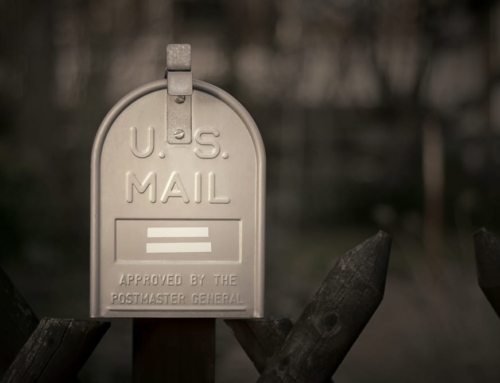What documents do I get after paying off my mortgage? These are the documents you should receive from your lender after paying off your mortgage.
Q: My husband and I love to read your articles in the Home section of our local paper.
We are close to paying off our home mortgage and would like to know the documents that we will receive from the mortgage company once we finish paying off our mortgage.
Our loan was recently transferred to a new servicing company that we are not familiar with. This new company does not have the same level of service or rapport with us as customers. We want to receive all the appropriate documents (especially if they are required by law) to show that we own the property free and clear.
What Documents Do I Get After Paying Off My Mortgage?
A: Congratulations on getting close to paying off your home in full. Not many homeowners get to say that they’re mortgage-free.
When you pay off your loan and you no longer have a balance with the lender, the lender should automatically show your account as having no balance. You’d assume that as a given, but you need to distinguish between different kinds of mortgage loans.
How It Works When You Have a Standard 15-Year or 30-Year Fixed-Rate Mortgage
If your loan is the standard 15-year or 30-year fixed-rate mortgage, your lender should send you a letter telling you that you’ve paid your mortgage in full. The lender should enclose the original note and mortgage you signed many years ago. Each of those documents may be stamped “canceled” by the lender. (Some of our readers actually frame their canceled mortgage document!)
The note you signed some time ago is an instrument that gives the holder the right to collect money under the loan. One lender may transfer that note to another lender. Each subsequent lender can rely on the note to claim payment from you. Think of your note as a check that’s written to a friend. The friend doesn’t cash the check but endorses it over to a different person. At some point, the holder of that check may want the money owed under the check.
Because the note you signed is a legal instrument, you want to get it back and see that it has been canceled.
But if you have an equity line of credit – a loan against which you can borrow, repay and borrow again – the lender knows you can withdraw funds in the future, on demand. If this is the kind of loan you’re asking about, you won’t get anything from the lender unless you tell the lender that you want to close the loan and terminate the arrangement where you can borrow additional funds.
How It Works When You Have an Equity Line of Credit
Once you terminate an equity line of credit or if the term ends and you have no balance on it, you’d expect to get the canceled note and mortgage back from the lender.
So if your loan has come to an end and you’ve paid it off in full, and you’ve received from the lender your canceled note and mortgage, you still need the lender to release the lien it had on your property. In some states, your lender may send that release document straight to the office that records or files property documents where you live. That document may be called a “Mortgage Release,” “Release of Deed of Trust,” or may be referred to by some other similar name. You could then check with your local recorder of deeds office to see if the release has been filed.
When you took out your mortgage, your lender had a lien placed on your home to have your home serve as security in case you failed to make payments under your loan. Once you pay off your loan, the release of lien tells the world your property is no longer encumbered by that lien.
To summarize, you need to get back your original note, mortgage, the release document and final statement from the lender showing your loan paid in full. That should be it. With those documents, you should have enough to have comfort that you’re done with the lender.
Update Homeowners’ Insurance to Remove Lender’s Name
Please remember to contact your homeowner’s insurance company to have them remove your lender’s name as an additional insured on your policy. Now that your loan is paid in full and doesn’t have a lender, you don’t want to deal with that lender in the future if you suffer a loss on your home and make a claim with the insurance company.
Also, some lenders have become quite slow in returning the note and mortgage back to their borrowers. If you don’t get these documents back, but the lender does release the lien and you have a statement from the bank showing that your loan balance is zero, you should be fine.
While it would be great to have the original documents, a quick check of your credit at AnnualCreditReport.com should show that your lender has reported that the balance outstanding on your loan is now zero.
A final wrinkle: if the release is sent to you directly by the lender, you must take that document to your local recorder of deeds office or another office where real estate documents are filed and record or file that document. Once you do that, your property will then show that the lien of the lender has been released.
More on Topics Related to What Documents Do I Get After Paying Off My Mortgage?
Credit 101: What’s in Your Credit Reports?
How to Find Old Mortgage Loan Records
Can You Change Your Mortgage Loan Servicer?
Should I Get the Promissory Note After Paying Off My Mortgage?
Managing Mortgage Payments in Retirement
Why Aren’t My Mortgage Payments Being Reported After Bankruptcy?
Choices With Reverse Mortgage Payments
With an Underwater Mortgage, This Senior Homeowner is Desperate for Help
Is Refinancing Your 30-Year Mortgage Really a Good Decision









Ok… so here’s a question… under what law is the requirement to return the note? Let’s say you’ve lost your house to foreclosure, the Bank has decided not to go after a defeciency… I am sure there would be some kind of statute of limitations involved… but after those limitations have acrued, then under what law would the ex-homeowner demand the return of his note?
Thanks in Advance!
John
Unfortunately, while this article provides good information for what SHOULD happen, it does not say really anything about what DOES happen today. The game is not the same as it used to be.
In the good old days, you would go down to your local bank, and take out a mortgage there. You would sign a promissory note and a mortgage(or in some states, a deed of trust). The promissory note would stay locked in the vault at that local bank until you made your final payment…at which time, the bank would cancel the note and hand it over to you. Those days are long gone.
If you are like most of us–myself included–you will discover that your “original lender” is no longer in the picture on your loan. These loans are often packaged into securitized trusts, and sold, resold, even sold again. Many times, we were never told of these sales, even though the law requires the lenders to notify us. This presents many problems. One such problem is “where is the original documentation?”
Think of it this way. Your promissory note is an instrument, kind of like a check. Let’s say you write me a check for $1000. I take that check, make 50 photocopies of that check, and sell them. If someone tried to present one of those photocopies at your bank for payment, the bank would NOT pay it. Why? Simple–the note is a legal document. A photocopy is not sufficient. You need the ORIGINAL note to be entitled to payment. Make sense? Good. Now that you understand that, toss that knowledge right out the window, because the banks have either lost or intentionally destroyed millions of original notes. I’m not kidding. Don’t believe me? Go attend your local court on foreclosure hearing days. You will see that NONE of the entities that is foreclosing on homeowners can present the original note. They sometimes can present COPIES, but we just covered that a moment ago. The copy is not supposed to be sufficient, but unfortunately, it has been determined to be “enough” in most places to allow them to foreclose.
So, let’s say you are not in foreclosure and you just want your original note back after paying off the loan. Good luck with that. If these banks lost or destroyed your note(and it’s a very high probability that yours is among those), then obviously you cannot ever get it back. The best you can hope for is a cancellation of the note to be filed in your county recorder’s office. This “should” be sufficient. But then again, you need to remember that most of these banks and lenders have already been found to be breaking the law in some way in recent years. People have had foreclosure cases filed against them when they never took out a mortgage on their homes. People have had cases filed against them when the mortgage was already paid off. Others have had foreclosure actions filed against them by a “bank” that does not even own their loan! Remember the 50 photocopies I mentioned? That is the same thing. Our loans have been bought, sold, passed around, and horse traded based on a photocopy for years now, even though the law says it is not legal. I recently learned that the mortgage I took out a decade ago was sold off and securitized into a trust the same year I took it out….I was supposed to be notified, by law, within 30 days of the transfer. I found out earlier in 2015, and I had to find out on my own. The lender never told me. That lender did not own this loan since that year. But that did not stop this same lender from “selling” this same loan in 2014 to someone else. Think about that for a moment. The lender sold the loan in 2005. They no longer owned it. So, how could they sell something in 2014 that they stopped owning 9 years prior? Short answer is they CANNOT. But they did anyways, and they did it by providing a photocopy of part of the original note to the “new owner” as “proof” that they had the legal authority to sell.
So why does this all matter? Simple. Until you have that original note back in your hands, it’s possible for someone to come along, claiming to possess your original note, and try to take your home. If you have the cancelled note, and someone tries to do that, it’s relatively simple to put a stop to it. But, if you do not have a cancelled original note in your possession, anyone with a copy can come along and try to make a claim for foreclosure. In some states, like California, they do not even need to sue you to foreclose. The Uniform Commercial Code, which every state has adopted some form of, governs the issue of notes and how they must be handled. But the courts are most often ignoring the UCC, even when homeowners bring that law up.
I have that problem too
Your information:
“A final wrinkle: if the release is sent to you directly by the lender, you must take that document to your local recorder of deeds office or other office where real estate documents are filed and record or file that document. Once you do that, your property will then show that the lien of the lender has been released.”
is not quite correct. Our registar of deeds tells me that I have to go to (and pay!) a title company to get that release if the lender did not do it
When getting a home equity line of credit I found the mortgage never was released.
Oh. My!!!… Concerned citizen, could u possibly email me? [email protected].
I find myself days away from the 2nd foreclosure sale of my home. The note the note the NOTE!!! HOW CAN BANKS FORECLOSE IF THEY DONT HAVE THE ORIGINAL BONIFIED NOTE!!!
I have been checking out many of your stories and it’s pretty nice stuff.
I will definitely bookmark your site.
Thanks. Appreciate the nice comment.
I have a question
Sure, William. How can I help?
I want a copy of our house deed that we have paid off,
V. ROBERTS.
I am trying to get my deeds for my house and the bank said they don’t have them and my solicitor also said they don’t have them what should I do ?
We paid off our home in December 2016 and the lender “claims” they sent us all the paperwork. We never got any of it and now they say they can’t send us a new copy because the one they sent out was the “only” copy they had. They did release the lien and I have proof of that but do I still need to be concerned? If so who would I contact to help me with this?Jessica
Madeline May 3, 2017 we paid off our loan over twenty years ago.. I don’t remember if I filed the letter or even received the letter.. now we are having problems getting a home equity loan because they are saying the lien is still there.. we contacted the bank of the original loan and no one seems to be able to help us.. We need to get this lien released and don’t know what else we can do… Who can I contact to help us with this matter… the original bank was Barclays Bank of New York .. Sincerely Madeline
I am in the same situation. I can not get a home equity loan until my lien is released. The mortgage company has informed me that the Lien Department is backed up. It has been 43 days since I paid off my house. How do I get them to expedite things? I need my Lien Release. The home equity bank is not accepting letters from the mortgage company that I paid it off and have a zero balance.
You’re in a tough situation. You could contact the department in your state that regulates mortgage lenders and file a complaint against the mortgage lender in question. You might also contact the CEO’s office and file a complaint there. If they’re away how backed up your lender is, they might have an ombudsman-type individual who can help cut through red tape for you.
Good luck, and let me know what happens.
Ilyce
who can I contact to get a letter stating I satisfied a home equity loan
my name is Madeline and I have tried contacting my original bank about the papers satisfying the home equity loan.. they are unable to help me or even direct me to someone who can.. I need these papers .. Is there anyway I can get them .. the bank was Barclays bank of new York .. frustrated
I sold a house in Fort Myers, Lee County, Florida on a type of land contract. I received about half down and to get balance after mortgagee sold an RV. In the meantime I let him finance the remainder for 8 years. Just got word that he has the balance and will send me a certified check. What do I provide him and am I required to send Lee County Clerk a release of lien/deed?
If a warranty deed is dated in 2004 but a company trying to foreclose on me only goes back to 2007, because of a refi, does the original warranty deed still stand or did another warranty deed need to be made during the 2007 refi? The 2004 origination of the note and the equity line of credit were both cancelled in 2007. How does the 2004 warranty deed still stand as part of my 2007 refi?
My Credit Union merged with another credit union. I have a HEL… The new credit union posted on my account that it is paid off.. I owed $59,000… What happened to my HEL loan???
15 yrs ago i startef paying for rent to own land gave 10,00 down 350 pymts monthly.should finish by dec.what to do for tranfer of name on land.what to expect
I payoff my mortgage on 9/17, I just received a “Full Reconveyance” letter from my lender which recording requested by First American Mortgage Solution. The letter had the label sticker with my county stamp and “Official Records “ by my county also notarized. I also received statement with included details transactions / letter stated that my mortgage had been payoff -zero balance. Do I need any further steps. Thanks
My parents purchase a home in 1983 the loan was with countwide . bank of america was payed off in april 2008. Ten year later there is no paper work .i jave neen working on thos b4 xmas of 2017 on a daily base im no closer to seeing paper work now .then i was 6month ago .My question is there a time frame for the bank. To send paper work for the state of ill thanks
Was recently told the cancelled original deed is not handed out any more…..just a note showing a cancelled/satisfied mortgage loan, via your register of deeds office, which can be simply printed out from online now. Any reg of deeds where you bought house, county/city, shows the documents.
Great article! I’m wondering how I would go about possibly at least finding out if my note might be available? I purchased a house from someone using a real estate agent and we paid cash for it. All we have is a warranty deed. So, under this circumstance, who would I contact about the note. It’s worth trying. Thanks
Good article, however my question is, is it by law that the lender is required to return the original note and mortgage marked “cancelled” or “paid in full” upon the satisfaction of the note? Or is it at the lender’s discretion? If it is by law, do you know the statute or the authority? I am in the state of Florida.
Vlad,
We don’t think there is a law requiring lenders to return the original note and mortgage marked “cancelled’ or “paid in full,” but it would great if there way. When it comes to lenders and banks, state law typically governs state-chartered institutions. But if a lender is federally-chartered, it would be governed at the federal level, no matter what state you live in.
What you want to look for is the release of mortgage. You can do that online, through your local recorder of deeds office or have a local title company perform a search for you.
Thanks for your question.
Ilyce and Sam
Me and my husband we divorced 2012 and the decree certificate stated that I should inherit all accumulated in our marriage now my question is that I nee to change the property into my name how should I do that ?
How does one get the deed to the property?
I’m waiting for my mortage to send documents of liens so I can sale my home. I have a buyer now but can’t sale until I get this from mortgage company. I’ve had my mortage sale to different mortgages so have those liens that have to be released to sale. What do I do?
I bought a house in2008, from2008 to 2018, I refinanced my house a couple times, in 2018 , I bought another house, I also had the equity loan, before I bought that house , I paid off the house I bought in 2008 , now it has been 2 months already, I did received the mail from the lender said I have paid off my house, but the question is should I get the title from the lender? I don’t get that title is it because I still have that equity loan? If I paid off that loan, how and where can I go to get the title?
My question is at my beginning mortgage was A and years later it changed to B mortgage, I was with B mortgage only 6 months then I payoff my mortgage in 6 years ago. Meanwhile, I just received a letter from the B mortgage stated that my loan is paid off in full amount otherwise it should release more documents or title of my property. Should they send me The TiTLE instead or What I should do,know it is kind of late to ask this question!!! Please help!!!! Thanks
I finished to pay my mortgate or house in October last year 2019 but bank since debit my money( R5000.) when I complin they say I must get legal advisor.to day is February 2019 please help which step should I take to cancellation and get my money back from bank
this is juliet i finished my morgage 9 monthes ago still i am waithing to city send my final paper work still i didnt gate any why shall i do
Good Day
After paying of my bond, i was told that i need to get a lawyer to transfer the property from the bank on to my name and pay another fee.
I paid off my mortgage in April 2022 and did not receive my paperwork in the mail. Told it was sent April 26 requeisted it be resent and was told I had to pay a fee for a copy. Got angry and wouldnt pay for what I did not receive. Finally said they would reissue at no charge. Called when copy not received and told Sent August 16 still have not received it. I am a the end of miy rope. Never had issues with receivng anything in 20 iyears. Who can help me